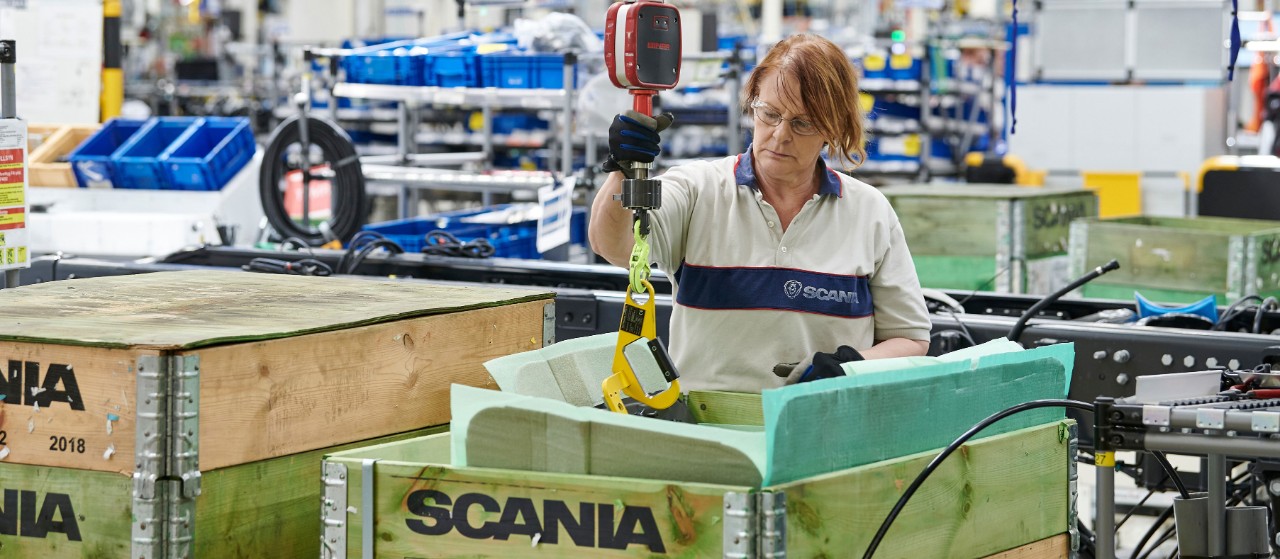
Sensor-based servicing saves money
27 AUGUST 2020
At Scania’s production units in Södertälje alone, it is estimated that there are more than 2,000 lifting devices, such as cranes and hoists. Each of these must be regularly inspected and serviced to ensure safety, sound ergonomics and compliance with legislation.
Determining inspection and service intervals has hitherto been guesswork, based on estimated usage. Until now, no one could state, with any certitude, precisely how many hours and minutes the equipment was being used as the basis for determining periodic inspection.
That could all be a thing of the past thanks to small battery-powered sensor systems, tested and implemented by Scania’s Smart Factory Lab. The Lab is an in-house incubator that develops – as the name suggests – smart and cost-effective solutions to enhance efficiency in production.
The small sensors record magnetism as the lift devices are powered when in use and wirelessly transmit this data once or twice daily through the 4G network to the cloud. The technology is by no means revolutionary but has become possible to utilise in the production environment when battery-powered and mobile telephony transmission sensors now are available. To install electric power and wifi throughout the vast factory area would have been prohibitively expensive.
“As trials, we’ve already installed six sensors and will now install an additional four,” says Process Engineer John Ekström at the truck assembly workshop in Södertälje. “An added advantage is that we receive an indication that the mandatory daily inspections by operators of lifting devices and accessories is actually carried out since we register that they are powered at a given time.”
Process Engineer John Ekström at the truck assembly workshop in Södertälje.
Maintenance based on need rather than on intervals
The sensor sends data identifying itself and how long time the monitored device has been in use. With this limited amount of information sparingly transmitted, the lifespan of the batteries is estimated up to two years.
“With these trials, we hope to determine whether this a viable solution, practically and economically,” says Senior Engineer Anders Ramström, Scania Industrial Maintenance. “There is no doubt that we would like to move towards maintenance based on need rather than on intervals.”
In parallel, Smart Factory has designed a management and analytics programme that monitors the usage of lifting equipment and triggers needed maintenance. “Many would assume that this is simply a matter of attaching a sensor to the equipment but we’ve spent six months developing and testing the technology as well as designing a workable and scalable plug-and-play programme to follow up collected data,” says Project Engineer José Maria Sabater Iglesias, Smart Factory Lab.